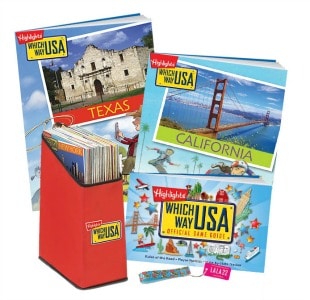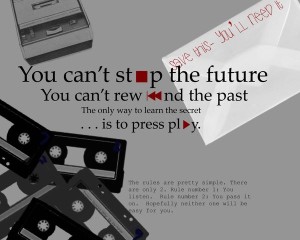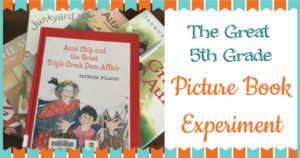Note: Today’s post is a guest post from Rachel ~ you might remember her from the first Community Blog Review! I’m thrilled to have her with us today, helping us help our kids learn to read.
My little ones absolutely love reading books. We have hordes of books, we go to the library, and still it isn’t enough. Of course they have their favorites too, and as every parent knows, they can go through jags where the same book has to be read three (or even more!) times a day. I have 3 younger ones, ages 5 ½, 4 ½, and 3 ½, and as much as I know it’s good for them, it can drive you batty after a while! It being the summer, and of course the time when parents worldwide decide to spend a little extra time boosting their child’s skills, I’ve hit on a clever way to keep us both happy: they get to enjoy their favorite books, and I get to sneak in some great learning activities that really boost their literacy skills.
Here’s what you do:
Day 1: Help your child practice sequencing skills
For this activity you’ll need a large sheet of poster paper (or tape several sheets of paper together lengthwise) and markers. On the first day, go through a quick reading of the book, just to refresh your child’s memory. Then ask your child to retell the story. Help her paraphrase each part of the story into one sentence. (“So you’re saying that Max made a lot of trouble and had to go to his room?”) As your child tells you the story, write a sentence of what she says on a strip of paper. Make sure you write large, clear words. You want to have a sentence for each part of the story. After you finish writing each sentence, read it aloud to your child, pointing to each word as you do so.  Next, have your child draw a picture to illustrate each sentence. If that’s too hard for her, ask a friend or a sibling to help her out. She can also spread out the illustrations over a day or two. (You could also just take pictures of the pages with a camera, and print them out). When she finishes, attach each picture to its appropriate sentence strip. Now it’s time for your child to sequence. Ask her to put the sentence strips so it tells a story. If she makes a mistake, don’t correct her. When you read what she’s arranged at the end, she’ll automatically catch her mistake, and want to fix it. TIP: If your child gets really good at sequencing the sentence strips with the pictures, let her try sequencing them without the pictures. This works best if your child can recognize a few simple words.
Next, have your child draw a picture to illustrate each sentence. If that’s too hard for her, ask a friend or a sibling to help her out. She can also spread out the illustrations over a day or two. (You could also just take pictures of the pages with a camera, and print them out). When she finishes, attach each picture to its appropriate sentence strip. Now it’s time for your child to sequence. Ask her to put the sentence strips so it tells a story. If she makes a mistake, don’t correct her. When you read what she’s arranged at the end, she’ll automatically catch her mistake, and want to fix it. TIP: If your child gets really good at sequencing the sentence strips with the pictures, let her try sequencing them without the pictures. This works best if your child can recognize a few simple words.
Day 2: Teach phonics by building words.
This is a game I borrowed from my teaching days. In it, your child learns how to recognize a few simple words, how to sound them out, and how to spell them. This helps not only her letter knowledge, but also teaches her how to hear the different sounds of the words, an important early reader skill. This is what you do: choose a simple word, not more than 5 or 6 letters. Write it on an index card. Then write the letters of the word on separate pieces of heavy card paper; each one should be about one fourth the size of a regular piece of paper. Next, have your child help you gather all of her stuffed animals or dolls, the only requirement being that they all need to be able to sit easily. Shuffle the letter cards, and let your child choose which toys will get which letter. Tape each letter on the front of the stuffed animal or doll. After all the letters are gone, have your child put the letters in order. If she doesn’t know any letter names, help her hear the sounds at the beginning and the end of the word; when she is able to isolate the sound, show her what letter goes with that sound. You can stretch out the word to help her get the hang of things. She should then put the stuffed animals with the letters in order, using the word card if she needs help.  And that’s it! It’s an easy way to improve your child’s reading skills with a favorite book, and can be done in a day or two.
And that’s it! It’s an easy way to improve your child’s reading skills with a favorite book, and can be done in a day or two.
TIP: You can use new books to improve your child’s literacy skills and language development as well.
About the Author
Rachel is a mom to 7 children, 3 of whom have learning disabilities. She has over 20 years experience working with kids and adults of all ages. Her specialty is disabilities on the autistic spectrum, and language delays. You can visit her blog at http://teachingthefuture.net for more great hands on learning games that will boost your preschooler’s learning skills.





















A very great tip for raising the vocabulary of my 3 year old. But in my case I think I’ll paste the work on his train collections. Thanks a lot.
that’s a great idea… whatever is going to help them really connect with the words!
Actually my 3 year old was intent in using his tractor for one of the letters. Unfortunately that idea was ruled out by his 2 older sisters; they managed to convince him that next time he’ll get to use all the trucks he wants 🙂
My daughter is already 7 years old and is good in reading, I may say. She can already construct sentences following the correct English grammar. We’re Italians so learning the correct English grammar is usually a challenge for our children. My biggest challenge for now is her spelling technique and I’m wondering if you can somehow post about building a child’s spelling techniques?In one sentence, she usually gets 2-3 words spelled incorrectly.
Thanks for commenting Marcus!
Can you be a little more specific about what kind of spelling mistakes she makes? Is it usually longer words, or even “easy” 3-4 letter words? Can she spell the words if she doesn’t have to write a sentence?
I have a post on improving your child’s spelling, which should help your daughter.
I’ll also be writing a post on learning to spell the Montessori way, and I’ll put up the link for that as well.
She gets spelling mistakes on both short and long words regardless of whether she’s writing it in a sentence or not 🙁 Thanks for the link,btw. I haven’t read it yet but I will after this.